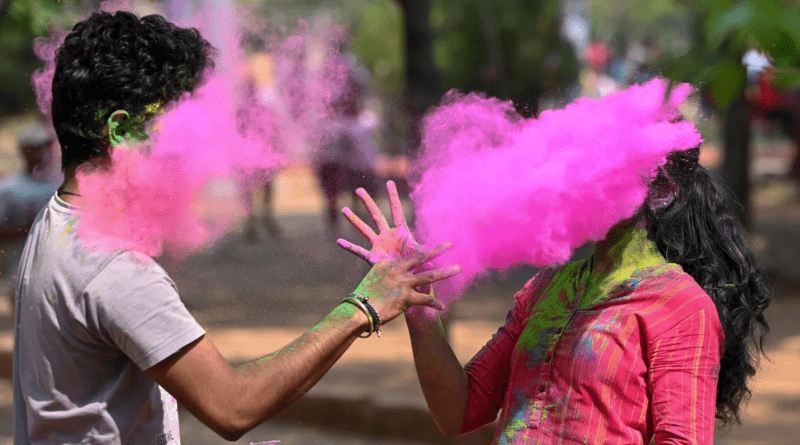The Devoted Eco-Conscious Gen Z Celebrating New Innovative Holi
Thanks to Gen Z in India, this year’s celebrations also represent a shift towards being environmentally mindful.
Aptly dubbed the “festival of colours” in the West, Holi is one of the most famous and culturally immersing events. It is celebrated with uncontrollable enthusiasm in India and other cultures across the world. In India, people throng the streets, playfully dousing each other in colour, and schools and offices close.
The event symbolises a lot of things, including love, fresh starts, the arrival of spring, and, in Hindu mythology, the victory of good over evil. Usually lasting two days, it starts with Choti Holi, also known as Holika Dahan, on the first day, when people light a bonfire to burn the mythical deity Holika and, in colder areas, to drive away negativity and atone for past transgressions. The many trees that are cut down in India to fuel those ceremonial bonfires are a drawback for the environment.
The primary powder-throwing ritual takes place on Day Two of Holi, which turns the entire nation into a colourful show. However, it may turn dirty when large groups of people congregate and saturate each other with water balloons, water pistols, and scented powder. Along with an abundance of water pollution, populations celebrating Holi are also exposed to powders that frequently contain dangerously high concentrations of synthetic dyes, heavy metals, acids, mica dust, and powdered glass.
Ways to make the world greener Happy Holi
Modern, inventive, and environmentally sensitive components are being included into the Holi traditions by Gen Z, who are increasingly recognised for their more responsible lifestyles and for rejecting customs that don’t suit them. According to the World Economic Forum, Gen Z is the generation that is most concerned about the health of the world and influences others to prioritise green living when making purchases. This change started a few years ago when millennials started substituting flowers or herbal hues for Holi powder.
Vegetable dyes, floral extracts, and household materials are commonly used to create natural and herbal colouring products. For example, use hibiscus flowers or pomegranate peel for red, turmeric powder for yellow, and palash petals for orange. However, Gen Z views this millennial-led movement differently: “It is my belief that there should be no waste and that not a single bloom or leaf should be removed. Priyanka Shinde, 19, of Pune, said, “Instead, I gather flowers that have already been given to temples and use fruit and food scraps left over from making snacks for our Holi parties.”
Beyond buying environmentally friendly
Social media content creators belonging to Generation Z are promoting planet-conscious values and giving the Holi event an environmentally conscious facelift. Sarah Mukherjee, 22, of Kolkata, stated, “This year I’ll be sharing #OOTD mirror selfies with styling tips on how to upcycle old discarded clothes into fun Holi outfits instead of buying new ones.”
A real planet-friendly lifestyle, according to Generation Z, encompasses a larger concept of love and respect and extends beyond sustainable buying.
Similar to this, stray animals have been doused with paint and targeted during previous Holi celebrations, particularly if they are unable to flee. The animals may experience health issues as a result, including blindness.




